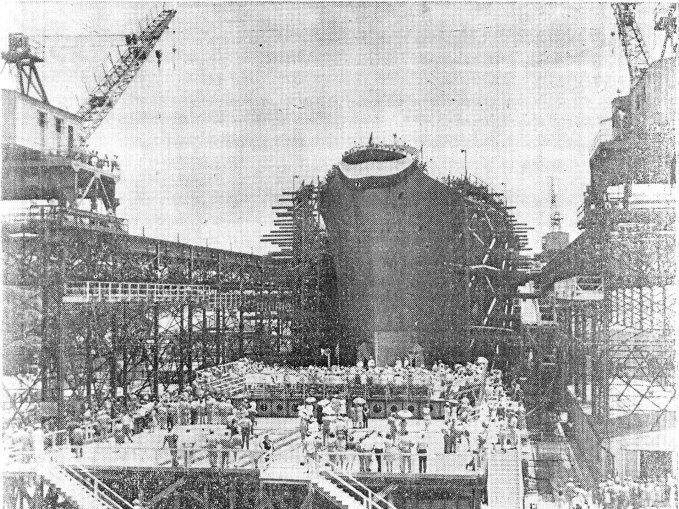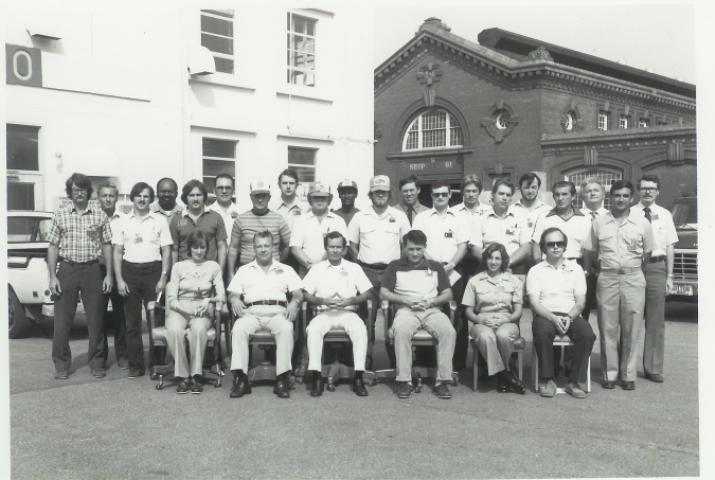
Charleston Naval Shipyard (CNSY) is situated on 400 acres of hard-land on the Cooper River, approximately five miles north of the historical city of Charleston. It was established in 1901 and became one of the primary maintenance and support facilities for submarines, guided missile ships, destroyers, cruisers, frigates, submarine tenders, and other surface ships.
In 1902, President Theodore Roosevelt toured an area north of the city on the Cooper River that was to become the Charleston Navy Yard. The construction of the first drydock was started that year and docked it's first ship in 1909.
In March 1917, just before the United States entered the war, Charleston Naval Shipyard had 1,708 civilians on payroll. During the war, the peak employment was 5,600. The work dwindled after the war was over and there was a lot of uncertainty over the future of the yard.
A new war threatening in Europe prompted the American Government to increase spending on the military. In 1939, the CNSY had a $3.5 million expansion and improvement program underway employing 1,700 to 1,800 WPA and PWA workers. By the time war was declared, the yard had nearly 2,000 production workers compared to 241 in 1932. The USS Sterrett (DD-407) had been commissioned and was virtually complete; the Roe (DD-418)had been launched and was being fitted out; the Jones (DD-427) and Grayson (DD-435) were on the ways. In addition, the yard had contracts for two more destroyers.
Two of the largest vessels ever built at the yard were two destroyer tenders, the Tidewater (AD-31) and the Bryce Canyon (AD-36). The Keels of these ships were laid in November 1944 and July 1945, respectively. Peak employment of 25,948 was reached in July 1943.
After the war, the shipyard was responsible for the repairs and alterations of captured German submarines. In April 1948 Secretary of the Navy John L. Sullivan told Charleston's Representative Rivers and Senator Burnet R. Maybank that the Navy planned for CNSY to become a submarine overhaul yard and would ask for an initial appropriation for a battery-charging unit.
In 1968 the Navy awarded the first contracts for the 32-ton, 34-foot long, poseidon missile to CNSY. Because of their size, the new missiles had to be assembled in a vertical position, and the construction of a new six-story packaging building became necessary. At about that time, True magazine alleged that there were enough nuclear warheads in Charleston to destroy all the cities in the Soviet Union... My grandfather, who was a crane operator (with nerves of steel) was the first people to load a fully assembled nuclear missiles on the east coast.
The end of the Vietnam War resulted in a reduction of the workload of the shipyard, but after the closing of the Boston yard, it rebounded. With the end of the Cold War and the downsizing of the U.S. military, it was determined that the Charleston Naval Yard and Navy Base were no longer needed to support a smaller Navy. The Navy withdrew its ships and crew and turned the base over to the CNCRA (Charleston Naval Complex Redevelopment Authority) who was tasked with finding productive commercial and public usage for the base. On 01 April 1996, operations ceased and it resulted in the loss of 8,722 military and 6,272 civilian jobs. However, the military remains a major industry in the Charleston area today, only in a different fashion. The 1995 round of Base Realignments and Closures resulted in the decision for Charleston to receive the Naval Nuclear Power Training Command transferring from Florida...
I do have some current images I took...









































